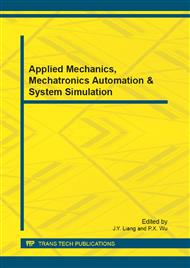p.772
p.777
p.781
p.786
p.790
p.795
p.799
p.803
p.808
Research on the Evacuation Complexity Model in Mass Emergency Evacuation
Abstract:
Based on the analysis of the mixed traffic evacuation in china, this paper presents the behavior characteristics and inherent laws of the mixed traffic evacuation, designs the quantification model of evacuation behaviors and utility index of mixed traffic evacuation. By improving the Critical Cluster Model (CCM), three types of sub-emergency planning zones (sub-EPZ) were presented, and the quantification expression and visualization of mixed traffic Emergency Evacuation were realized based on GIS. Through the analysis of emergency evacuation intent, this paper expands the theory of critical cluster model to solve the theoretical and technical problems, which provides a support for the scientific and reasonable emergency evacuation decision-making. This case study demonstrates the feasibility and effectiveness of the improved model from this study.
Info:
Periodical:
Pages:
790-794
Citation:
Online since:
September 2012
Authors:
Price:
Сopyright:
© 2012 Trans Tech Publications Ltd. All Rights Reserved
Share:
Citation:


